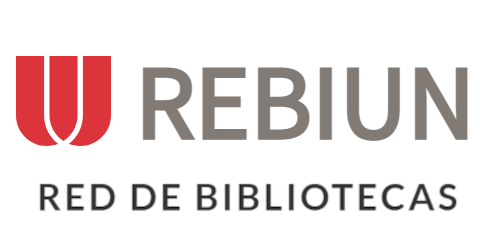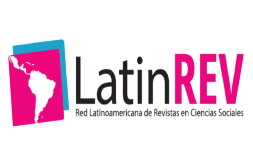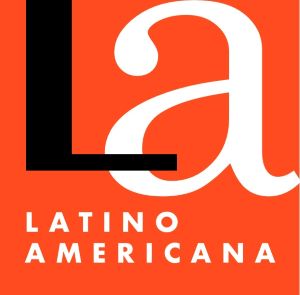La integración de la tecnología en la educación nocturna un estudio sobre la efectividad de las herramientas digitales
DOI:
https://doi.org/10.69639/arandu.v12i2.970Palabras clave:
educación nocturna, herramientas digitales, aprendizaje significativo, simulaciones interactivas, modelos matemáticosResumen
El uso de tecnologías interactivas en la enseñanza ha cambiado la forma en que se entrega el aprendizaje en las conferencias académicas. Al acompañar las conferencias con componentes digitales en el diseño de las clases en formato presencial para adultos, se activa, a la vez, el conocimiento y la motivación para aprender en los estudiantes adultos. La evolución de la tecnología abre nuevas fronteras para el aprendizaje y también para la caracterización de los procesos del material de aprendizaje. En la didáctica contemporánea se ha propuesto la incorporación de modelos matemáticos y el uso de simulaciones interactivas, los cuales junto con el aprendizaje de conceptos abstractos están orientados con la pedagogía de clase activa. Para este estudio, se usó un enfoque interpretativo con un marco descriptivo. En la parte cuantitativa se aplicó un diseño cuasi-experimental con un grupo que consideró el uso de Geo-gebra, PhET y otras simulaciones interactivas como herramientas digitales en el aula, y otro grupo paralelo que continuó con las clases tradicionales. En el estudio de la mediación didáctica se utilizó la evaluación del rendimiento académico y la implicación a través de la evaluación diagnóstica y encuestas estructuradas que incluían entrevistas no estructuradas en forma pautada. Para la parte cualitativa se realizaron entrevistas semiestructuradas y observaciones en el entorno académico con el propósito de entender las posturas de los alumnos y docentes respecto al uso de la tecnología en la enseñanza y aprendizaje.
Descargas
Citas
Bai, H., Hew, K. F., & Huang, B. (2021). Does gamification improve student learning outcome? Evidence from a meta-analysis and synthesis of qualitative data in educational contexts. Educational Research Review, 34, 100404. https://doi.org/10.1016/j.edurev.2021.100404
Baker, R. S., & Siemens, G. (2020). Educational data mining and learning analytics: Potentials and limitations for improving learning. British Journal of Educational Technology, 51(4), 978–987. https://doi.org/10.1111/bjet.12917
Bates, T. (2019). Teaching in a Digital Age: Guidelines for designing teaching and learning. Tony Bates Associates. https://opentextbc.ca/teachinginadigitalage/
Bernal Parraga , A. P., Coronel Ramírez, E. A., Aldas Macias , K. J., Carvajal Madrid, C. A., Valarezo Espinoza, B. D. C., Vera Alcivar, J. G., & Chávez Cedeño, J. U. (2025). The Impact of Artificial Intelligence on Personalized Learning in English Language Education. Ciencia Latina Revista Científica Multidisciplinar, 9(1), 5500-5518. https://doi.org/10.37811/cl_rcm.v9i1.16234
Bernal Párraga, A. P., Naguas Nagua, J. A., Villarreal Bonifaz, M. M., Santillán Sevillano, N. D. C., Reyes Ordoñez, J. P., Carrillo Baldeón, V. P., & Macas Pacheco, C. (2025). Gamificación como estrategia innovadora para promover el aprendizaje significativo en Estudios Sociales. Ciencia Latina Revista Científica Multidisciplinar, 9(1), 1044-1061. https://doi.org/10.37811/cl_rcm.v9i1.15860
Braun, V., & Clarke, V. (2006). Using thematic analysis in psychology. Qualitative Research in Psychology, 3(2), 77–101. https://doi.org/10.1191/1478088706qp063oa
Buckley, P., & Doyle, E. (2016). Gamification and student motivation. Interactive Learning Environments, 24(6), 1162-1175. https://doi.org/10.1080/10494820.2014.964263
Cohen, L., Manion, L., & Morrison, K. (2018). Research Methods in Education (8th ed.). Routledge.
Creswell, J. W., & Plano Clark, V. L. (2018). Designing and conducting mixed methods research (3rd ed.). SAGE Publications.
Dadvand, B., Cuervo, H., & McLeod, J. (2015). Educational justice for young people in precarious work. Journal of Youth Studies, 18(7), 869–885. https://doi.org/10.1080/13676261.2014.1001832
Dadvand, B., Howard, S. J., & Higgins, D. (2015). Digital divide: The impact of access and engagement with technology on children’s learning outcomes. Australian Journal of Education, 59(2), 111–125. https://doi.org/10.1177/0004944115586860
Deci, E. L., & Ryan, R. M. (2000). The “what” and “why” of goal pursuits: Human needs and the self-determination of behavior. Psychological Inquiry, 11(4), 227–268. https://doi.org/10.1207/S15327965PLI1104_01
Deterding, S., Dixon, D., Khaled, R., & Nacke, L. (2011). From game design elements to gamefulness: Defining “gamification”. Proceedings of the 15th International Academic MindTrek Conference: Envisioning Future Media Environments, 9–15. https://doi.org/10.1145/2181037.2181040
Dichev, C., & Dicheva, D. (2017). Gamification in education: Where are we in 2017? Proceedings of the 2017 IEEE 17th International Conference on Advanced Learning Technologies (ICALT), 1-8. https://doi.org/10.1109/ICALT.2017.56
Field, A. (2018). Discovering statistics using IBM SPSS statistics (5th ed.). SAGE Publications.
Flores, J., Smith, R., & Nguyen, H. (2022). Technology-enhanced learning in adult education: Challenges and opportunities. International Journal of Adult Learning, 45(3), 285–309. https://doi.org/10.1080/02601370.2022.2043092
Flores, R., Vásquez, M., & Gómez, P. (2022). Digital inclusion and educational strategies: The challenges of night education. Journal of Educational Technology & Society, 25(3), 45-59.
Gee, J. P. (2003). What video games have to teach us about learning and literacy. Computers in Entertainment, 1(1), 20–25. https://doi.org/10.1145/950566.950595
Gopnik, A., O’Grady, S., Lucas, C. G., Griffiths, T. L., Wente, A., Bridgers, S., & Dahl, R. E. (2017). Changes in cognitive flexibility and decision strategies across childhood and adolescence. Psychological Science, 28(10), 1356–1366. https://doi.org/10.1177/0956797617708610
Hamari, J., Shernoff, D. J., Rowe, E., Coller, B., Asbell-Clarke, J., & Edwards, T. (2019). Challenging games help students learn: An empirical study on engagement, flow and immersion in game-based learning. Computers in Human Behavior, 54, 170–179. https://doi.org/10.1016/j.chb.2015.07.045
Hanus, M. D., & Fox, J. (2015). Assessing the effects of gamification in the classroom: A longitudinal study on intrinsic motivation, social comparison, satisfaction, effort, and academic performance. Computers & Education, 80, 152–161. https://doi.org/10.1016/j.compedu.2014.08.019
Hohenwarter, M., & Preiner, J. (2007). Dynamic mathematics with GeoGebra. Journal of Online Mathematics and its Applications, 7.
Huang, W., & Hew, K. F. (2018). Do digital tools help adult learners increase engagement? Computers & Education, 126, 13–28. https://doi.org/10.1016/j.compedu.2018.06.005
Kim, P., Song, C., & Lockee, B. (2019). Innovative approaches to learning and technology. Springer Science & Business Media.
Kolb, D. A. (1984). Experiential Learning: Experience as the Source of Learning and Development. Prentice Hall.
Publicado
Cómo citar
Número
Sección
Licencia
Derechos de autor 2025 Janneth Elizabeth Caiza Urgiles, Mayra Alejandra Cuasapaz Michay, Marcia Elizabeth Bracero Murillo , Kerly Daniela Cuasapaz Michay, Ana Gabriela Nalvay Santiana

Esta obra está bajo una licencia internacional Creative Commons Atribución 4.0.






















